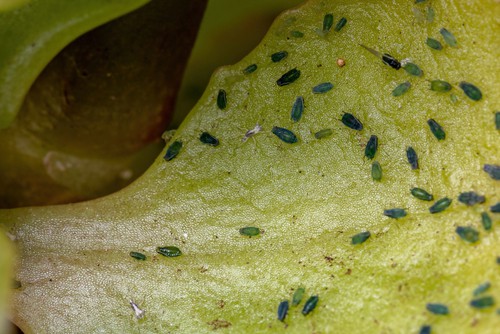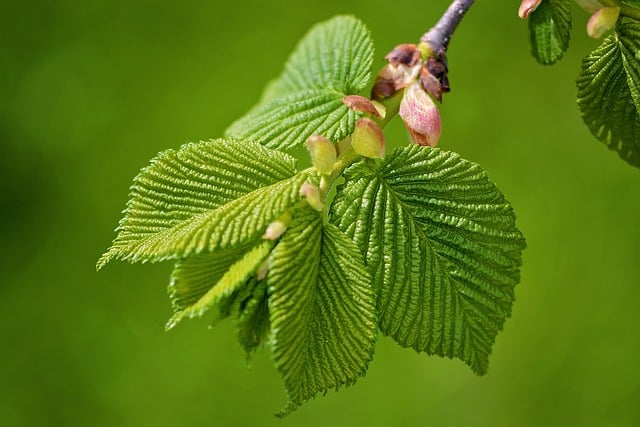Elm trees are a popular choice for landscaping due to their beautiful foliage and hardiness. However, many homeowners have noticed that their elm tree’s leaves are turning yellow, which can be a sign of a problem.
Understanding the reasons behind a Yellowing elm tree leaves is important in order to take the necessary steps to prevent further damage to the tree.
Yellowing leaves can be a sign of many things, including a lack of nutrients, over-watering, too much sun, or disease. In some cases, yellowing leaves can be a sign of Dutch elm disease, which can be fatal if not treated promptly. It is important to identify the cause of the yellowing leaves in order to determine the best course of action.
If you notice that your elm tree’s leaves are turning yellow, it is important to take action to prevent further damage. By understanding the causes and symptoms of elm diseases, homeowners can take steps to prevent and treat yellowing leaves.
With proper care and attention, homeowners can help their elm trees thrive for years to come.
Key Takeaways on Yellowing Elm Tree Leaves
- Yellowing leaves can be a sign of a lack of nutrients, over-watering, too much sun, or disease.
- Dutch elm disease can be fatal if not treated promptly.
- Identifying the cause of yellowing leaves is important in order to determine the best course of action.
You might also like:
Understanding Elm Tree Leaves Turning Yellow

When the leaves of an elm tree start turning yellow, it is a sign that something is not right. Yellowing leaves can be caused by a variety of factors, including lack of nutrients, over-watering, too much sun, disease, or insect infestation.
One of the most common causes of yellowing leaves in elm trees is a lack of nutrients. Elm trees require a balanced diet of nitrogen, phosphorus, and potassium to grow and thrive. If the soil is lacking in any of these nutrients, the leaves may start to turn yellow. Fertilizing the tree with a balanced fertilizer can help alleviate this problem.
Over-watering can also cause elm tree leaves to turn yellow. When the soil is too wet, the roots of the tree can become waterlogged, which can prevent them from getting the oxygen they need to function properly.
This can lead to a variety of problems, including yellowing leaves. It is important to water elm trees deeply but infrequently to prevent over-watering.
Too much sun can also cause elm tree leaves to turn yellow. Elm trees prefer partial shade and can become stressed if they are exposed to too much direct sunlight. If the tree is in an area with full sun, it may be necessary to provide some shade to prevent the leaves from turning yellow.
Disease and insect infestation can also cause elm tree leaves to turn yellow. Elm yellows disease is a bacterial infection that can cause the leaves to turn yellow, wilt, and eventually die.
Insect infestations, such as aphids or spider mites, can also cause yellowing leaves. It is important to identify and treat any disease or insect problems as soon as possible to prevent further damage to the tree.
Elm Tree Leaves Turning Yellow
Elm trees are known for their vibrant green leaves, but sometimes they can turn yellow, indicating that something is wrong. Yellowing leaves can be caused by a variety of factors, including disease, insect infestation, nutrient deficiencies, environmental factors, and other causes.
1. Disease and Fungal Infections
One of the most common causes of yellowing leaves in elm trees is disease or fungal infections. Dutch elm disease is a fungal disease that affects elm trees and is spread by elm bark beetles.
It causes the leaves to turn yellow and wilt, and can eventually kill the tree. Other fungal diseases that can cause yellowing leaves include elm yellows, phytoplasma, and phloem necrosis. These diseases can cause the leaves to turn yellow, wilt, and fall off.
2. Insect Infestation

Insect infestations can also cause yellowing leaves in elm trees. Elm leafhoppers, aphids, spider mites, and larvae can all cause damage to the leaves, causing them to turn yellow and fall off. Elm bark beetles can also transmit fungal diseases that cause yellowing leaves.
3. Nutrient Deficiencies
Nutrient deficiencies can cause yellowing leaves in elm trees as well. Lack of nitrogen, iron, potassium, magnesium, and sulfur can all cause the leaves to turn yellow. Fertilization and soil testing can help determine if the tree is lacking in any essential nutrients.
4. Environmental Factors
Environmental factors can also cause yellowing leaves in elm trees. Poor drainage, moisture, and mulch can cause the soil line to become too wet, leading to root rot and wilting. Red or black leaf spot, leaf scorch, powdery mildew, and verticillium wilt can also cause yellowing leaves.
5. Other Causes
Other causes of yellowing leaves in elm trees include dieback, which is the gradual death of branches and wood; extension, which is the death of the crown and inner bark; and wetwood, which is a bacterial infection that causes the tree to smell and the leaves to turn yellow.
Improper watering and fertilizing can also cause yellowing leaves.
Signs and Symptoms of Elm Diseases
Elm trees are susceptible to various diseases that can cause their leaves to turn yellow. Some of the most common elm diseases include elm yellows, Dutch elm disease, and elm phloem necrosis. In this section, we will explore the signs and symptoms of these diseases.
1. Elm Yellows
Elm yellows is caused by a bacterium that infects the tree’s phloem. The disease is characterized by sudden yellowing of the leaves, which often starts at the top of the tree and progresses downward. The yellowing is usually uniform and affects most of the leaves on the tree.
As the disease progresses, the leaves may become stunted and the tree may exhibit dieback, where the branches and twigs die off. In some cases, the bark may crack and ooze sap. The disease is fatal and infected trees should be removed to prevent the spread of the disease to other trees.
2. Dutch Elm Disease

Dutch elm disease is caused by a fungus that is spread by bark beetles. The disease affects the tree’s water-conducting system, causing the leaves to wilt and turn yellow. The wilting usually starts at the top of the tree and progresses downward.
As the disease progresses, the leaves may become brown and fall off the tree. The disease can also cause the tree’s bark to crack and peel. Infected trees should be removed to prevent the spread of the disease to other trees.
3. Elm Phloem Necrosis
Elm phloem necrosis is caused by a bacterium that infects the tree’s phloem. The disease is characterized by yellowing of the leaves, which often starts at the base of the tree and progresses upward. The yellowing is usually irregular and affects only some of the leaves on the tree.
As the disease progresses, the leaves may become stunted and the tree may exhibit dieback. The disease is fatal and infected trees should be removed to prevent the spread of the disease to other trees.
Treatment and Prevention Strategies
When it comes to treating and preventing yellowing leaves on elm trees, there are several strategies to consider.
Treatment
If the yellowing leaves are caused by a disease like Dutch elm disease, treatment can be difficult. In most cases, infected trees need to be removed to prevent the disease from spreading to healthy elms in the garden. However, if the disease is caught early, there are some treatments that can be effective.
Sterile pruning of infected limbs back to healthy wood and trunk injections with a systemic elm fungicide at a curative rate can be effective. Brands like Arbortech and Alamo have been found to work well.
If the yellowing leaves are caused by over-watering or too much sun, the treatment is relatively simple. Adjusting the watering schedule and providing shade can help the tree recover. If the tree is not getting enough nutrients, either from the soil or from fertilizer, adding nutrients to the soil or applying fertilizer can help.
Prevention
Preventing yellowing leaves on elm trees starts with proper care. Watering the tree regularly, but not too much, is important. Trees should be watered deeply once a week, and more often during periods of drought.
Proper pruning is also important. Pruning should be done in the fall, after the leaves have fallen off. This will help prevent the spread of diseases like Dutch elm disease.
Choosing healthy elms to plant in the garden is also important. Rock elm is a good choice, as it is resistant to Dutch elm disease. Planting disease-resistant cultivars from Europe can also help prevent the spread of the disease.
Frequently Asked Questions

What causes yellow leaves on elm trees?
Yellowing leaves on elm trees can be caused by a variety of factors, including nutrient deficiencies, overwatering, too much sun exposure, disease, or insect infestation. Elm trees require specific nutrients to thrive, and if they are not receiving these nutrients, their leaves may begin to yellow.
Overwatering can also cause the roots to rot, leading to yellowing leaves. Too much sun exposure can cause the leaves to dry out and turn yellow. Disease and insect infestation can also cause yellowing leaves.
How can I prevent my elm tree leaves from turning yellow?
To prevent your elm tree leaves from turning yellow, make sure that your tree is receiving the proper nutrients and water. You can fertilize your tree with a balanced fertilizer to ensure that it is getting the nutrients it needs. Make sure not to overwater your tree, as this can cause root rot.
Also, make sure that your tree is getting the right amount of sun exposure. Finally, keep an eye out for signs of disease or insect infestation, and treat your tree promptly if you notice any issues.
Are yellowing leaves a sign of Dutch elm disease?
Yellowing leaves can be a sign of Dutch elm disease, which is caused by a fungus that is spread by elm bark beetles. However, yellowing leaves can also be caused by other factors, as mentioned above.
If you suspect that your tree has Dutch elm disease, look for other symptoms such as wilting and yellowing of the leaves on one or more branches, and contact a professional arborist for help.
What are the symptoms of elm yellows?
Elm yellows is a disease that attacks and kills native elms. The symptoms of elm yellows include yellowing and wilting of leaves, stunted growth, and eventual death of the tree. This disease is caused by a bacteria called Candidatus Phyloplasma ulmi.
Can elm yellows be cured?
Unfortunately, there is no cure for elm yellows. Once a tree is infected, it will eventually die. However, there are steps you can take to prevent the spread of the disease, such as removing infected trees and avoiding planting new elms in areas where the disease has been present.
How do I know if my elm tree is diseased?
If you suspect that your elm tree is diseased, look for symptoms such as yellowing or wilting of leaves, stunted growth, and bark that is cracked or peeling. You may also notice signs of insect infestation or fungal growth. If you are unsure whether your tree is diseased, contact a professional arborist for help.

Hey, I’m Lisa and I’ve been an avid gardener for over 30 years. I love writing, talking and living in the garden! Feel free to connect with me on my socials below


